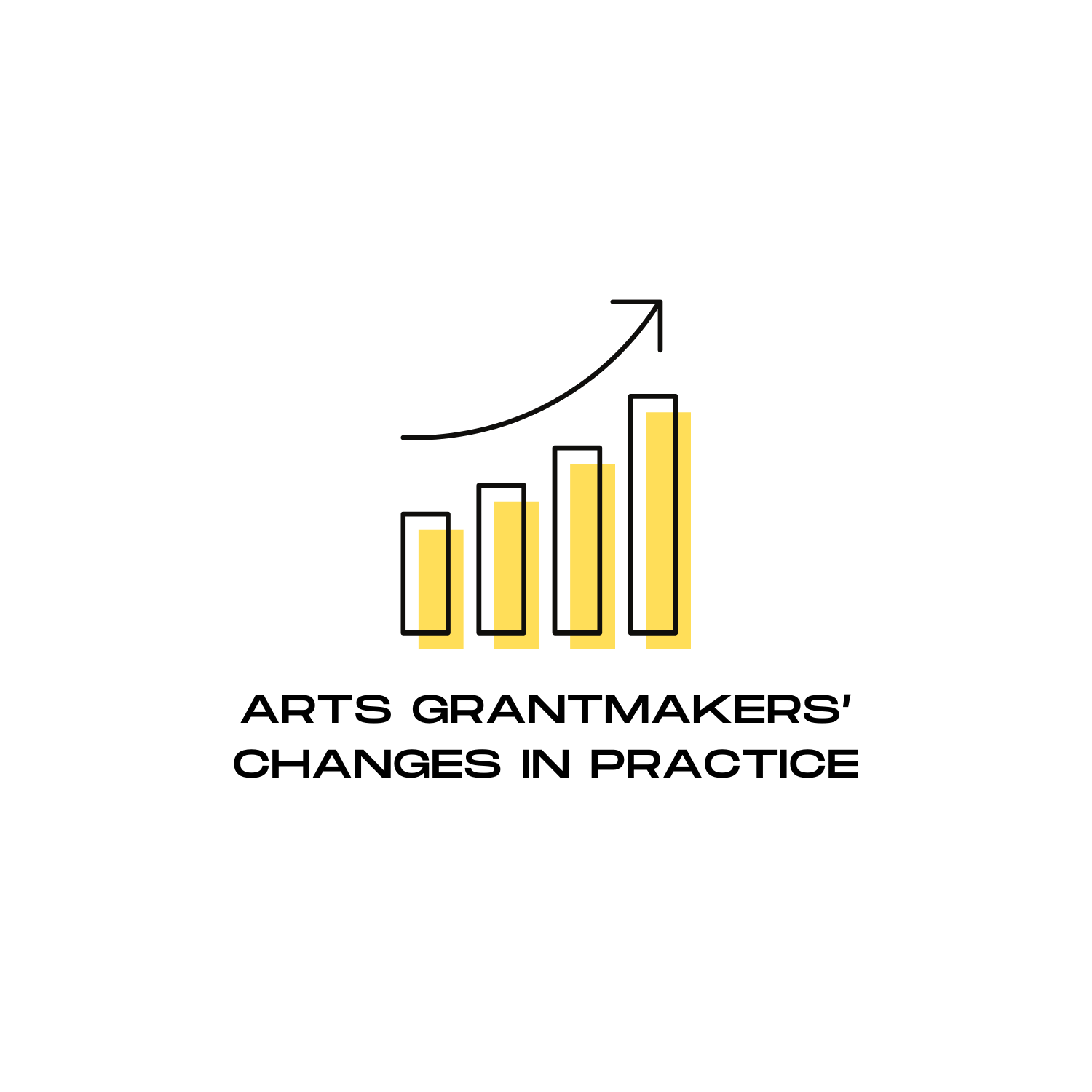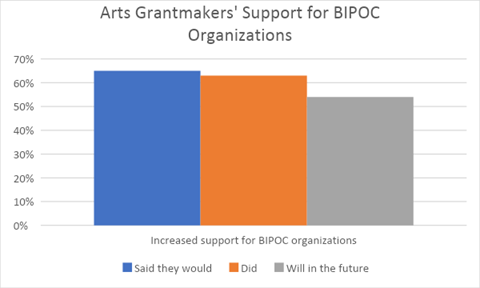Arts Grantmakers’ Changes in Practice 2021: Support for Artists & Equity

In late 2020, Grantmakers in the Arts shared findings from a survey of our members. The survey revealed that arts grantmakers were increasing their giving, flexibility, support for artists, and support for BIPOC organizations in response to the pandemic and movement for Black lives. This is the second part of the follow-up to that survey. Read the first part here.
Increased Support for Individual Artists
As was the case with increased support and flexibility, GIA’s survey respondents have increased their support for individual artists and cultural workers beyond their earlier projections.
- In 2020, 33% of respondents said they would increase their grantmaking to individual artists/cultural workers.
- In 2021, 41% said they actually had increased their grantmaking; a33% said they would increase it in the future.
- In 2020, 20% of respondents said they would expand their grantmaking practice to including giving to individual artists/cultural workers.
- In 2021, 30% said they expanded their grantmaking practice to including giving to individual artists/cultural workers.
- 25% said they would expand their grantmaking to include giving to individual artists/cultural workers in the future.
- In 2021, 30% said they expanded their grantmaking practice to including giving to individual artists/cultural workers.

Increases in Equity: A Movement or a Moment?
The pandemic newly exposed a crisis as old as our nation: racial injustice. GIA is proud of our field’s increasing commitment to racial equity, which is especially heartening in light of the challenges the larger funding field has faced in confirming the awarding of racial equity funds. In part, GIA engages in surveys like this one in response to the difficulty of collecting information on changes in equitable grantmaking over time. This is also why GIA has partnered with Doris Duke Charitable Foundation to examine how grantmakers track their own equity in arts funding, so as to more accurately hold ourselves accountable for increases and decreases in support to BIPOC communities. We look forward to updating you on that effort in time.
- In 2020, 65% of respondents said they would increase giving to BIPOC-led organizations.
- In 2021, 63% said they had increased giving to BIPOC-led organizations.
- Just over 50% said they would increase giving to BIPOC-led organizations in the future.
- In 2021, 63% said they had increased giving to BIPOC-led organizations.

While the increase in support to BIPOC-led organizations is positive, survey respondents project that commitment will diminish over time. The seduction of the past is false — the good old days were only good for a few of us. We must not allow the status quo to re-establish itself and squander our future.
Besides being committed to long-term change in practice, we must also become deliberate about supporting intersectionality.
- In 2021, 50% of respondents said they had increased giving to BIPOC artists/cultural workers.
- 36% said they would increase giving to BIPOC artists/cultural workers in the future.
- In 2021, 37% of respondents reported increased giving to organizations led by people with disabilities (most of it a fairly marginal increase of 5-10%).
- 28% said they would increase giving to organizations led by people with disabilities in the future.
- In 2021, 18% of respondents increased giving to artists/cultural workers with disabilities (most of it a fairly marginal increase of 5-10%).
- 25% said they would increase giving to artists/cultural workers with disabilities in the future.
- In 2021, 12% of respondents increased giving to trans-led/trans-serving organizations.
- 12% said they would increase giving to trans-led/trans-serving organizations in the future.
- In 2021, 20% of respondents increased giving to trans artists/cultural workers (with half of that a fairly marginal increase of 5-10%).
- 16% said they would increase giving to trans artists/cultural workers in the future.

We must continue to expand support for BIPOC, trans, and disabled artists and organizations led by BIPOC, trans, and people with disabilities.
GIA’s grantmaking community has accomplished what seemed nearly impossible two years ago. What was holding us back was habit, tradition, and social pressure. Our responses to the pandemic and racial justice movements can serve as a template for the future of grantmaking — we need not return to a past that didn’t serve all of us. Before the pandemic, GIA’s capitalization workshop consultant, Rebecca Thomas, reported that the Great Recession failed to alter our funding practices in meaningful ways, leaving the field even more vulnerable than before. We have now shown that we can make a new future, as long as we make it our shared reality.
